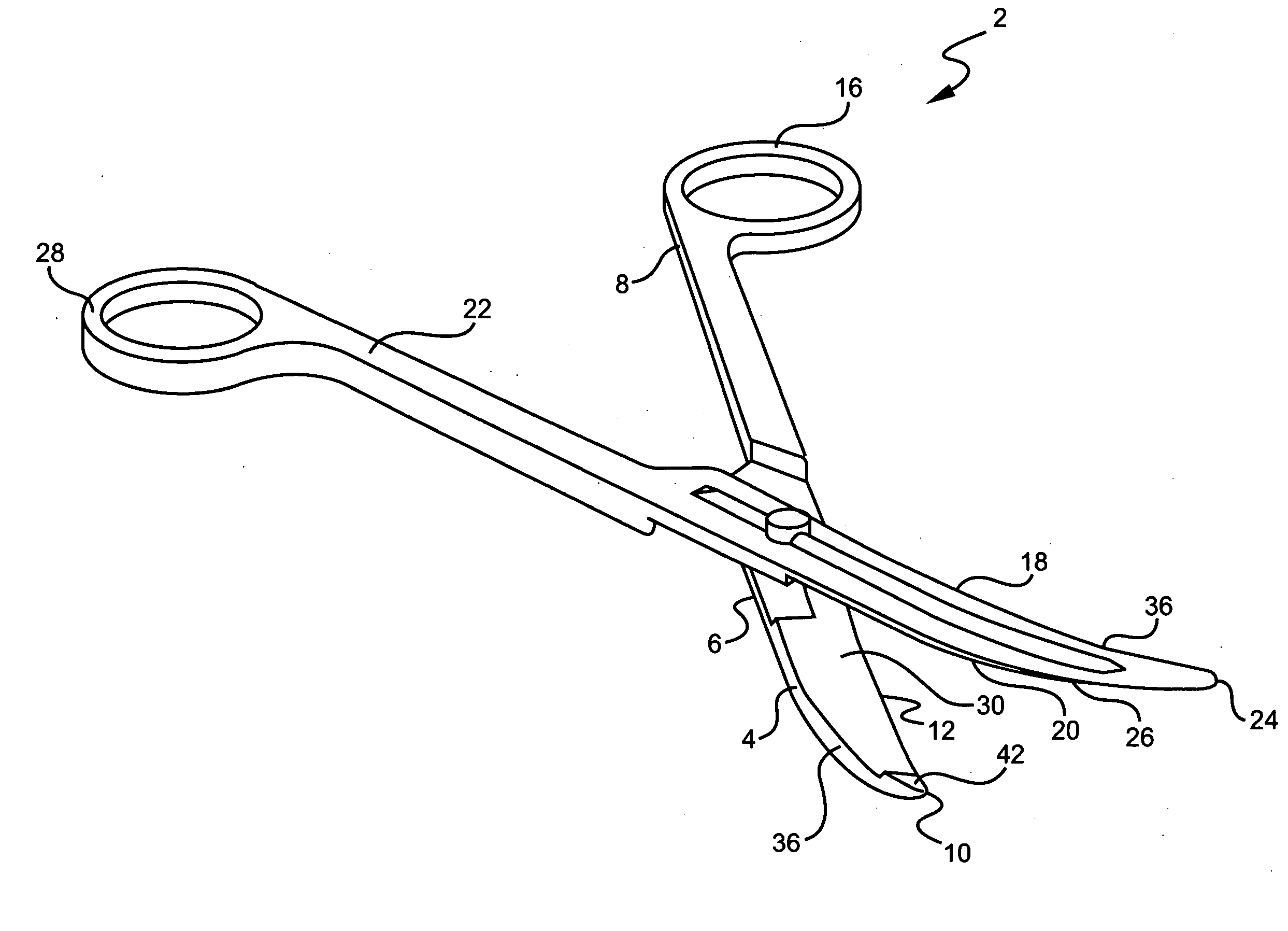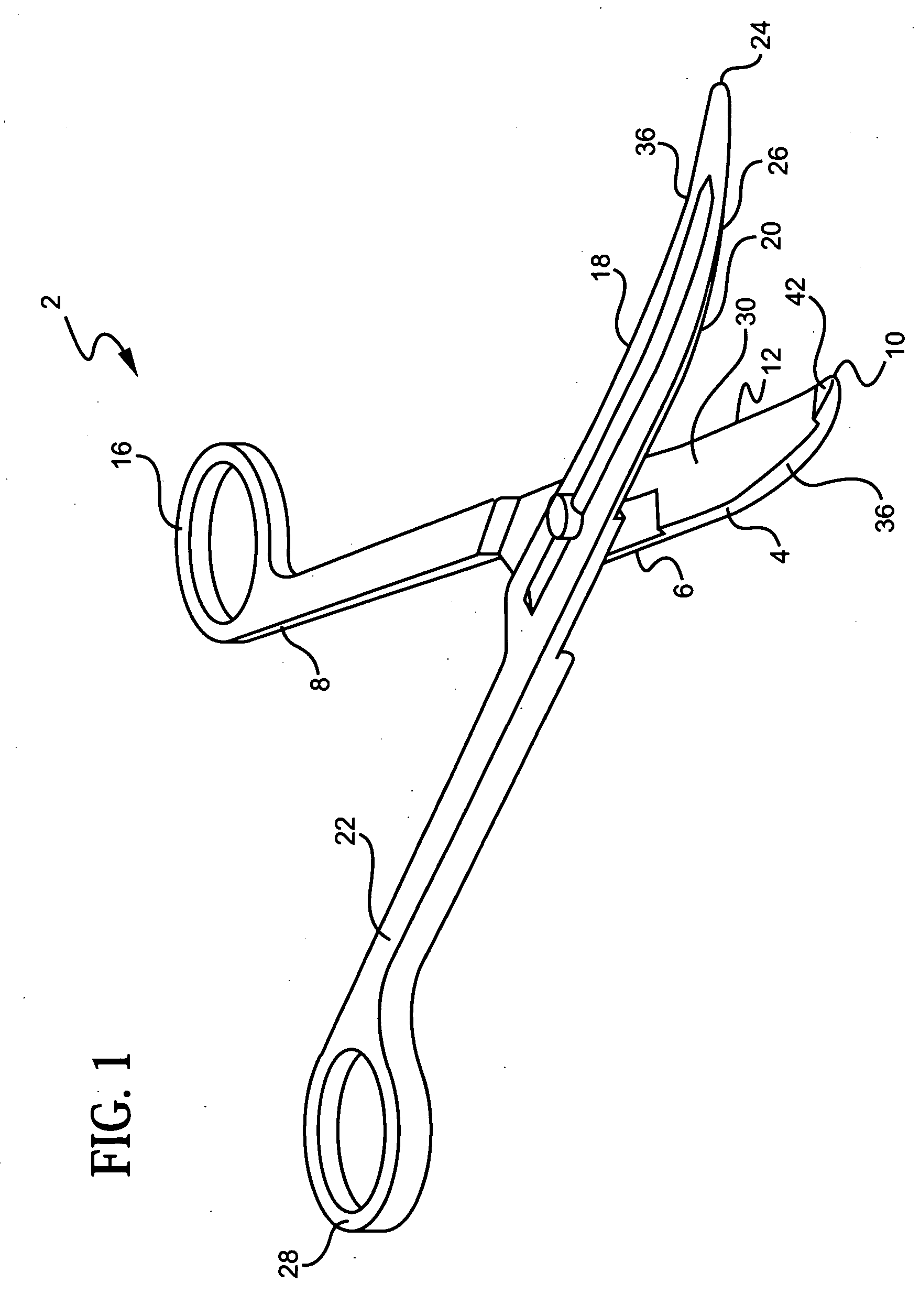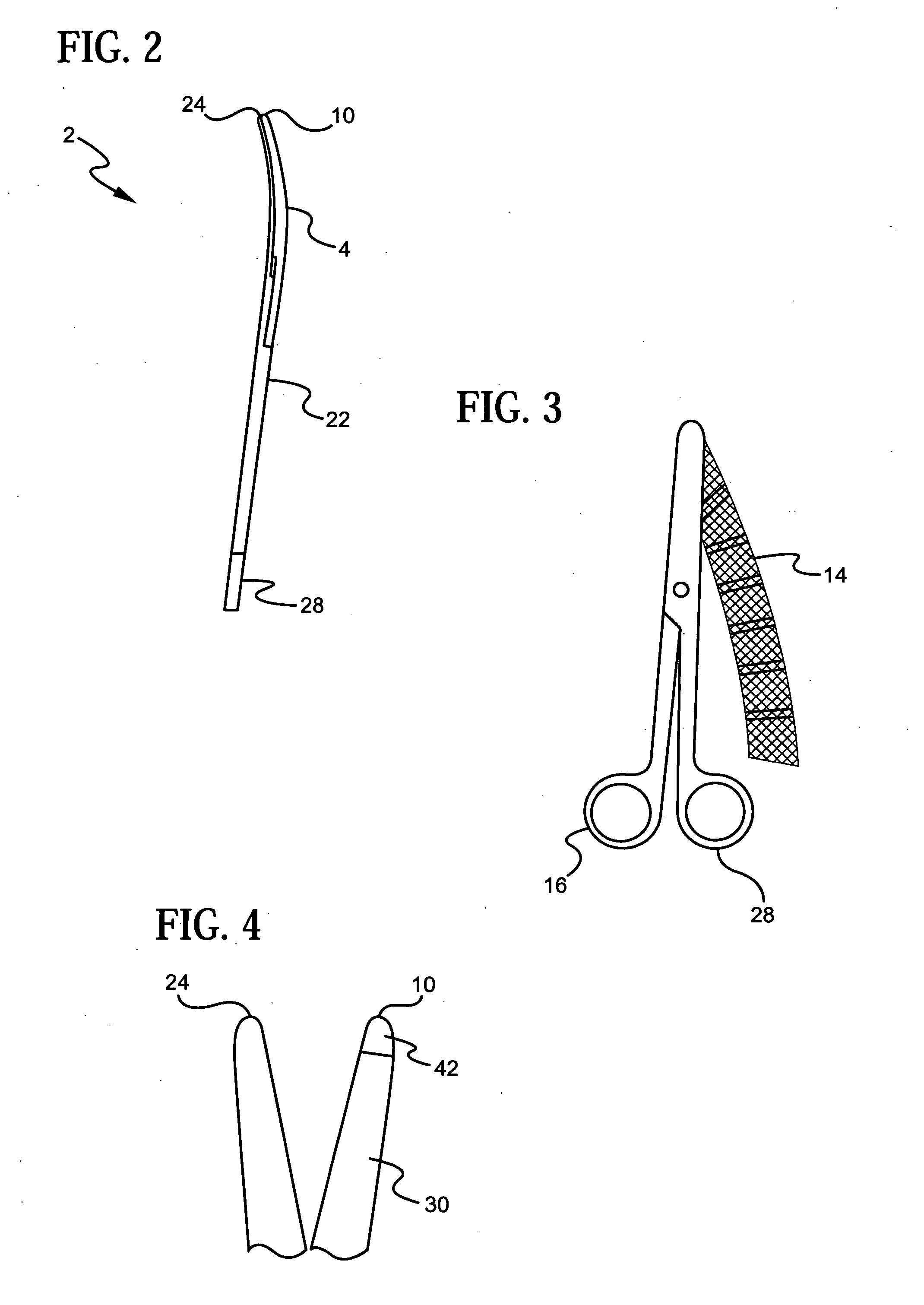Combination tissue dissector and surgical implant inserter
a tissue dissector and implanter technology, applied in the field of surgical instruments, can solve the problems of unsatisfactory curvatures of surgical devices for attempted dissection, unfavorable tissue enlargement, and possible movement of implants prior to incorporation,
- Summary
- Abstract
- Description
- Claims
- Application Information
AI Technical Summary
Benefits of technology
Problems solved by technology
Method used
Image
Examples
Embodiment Construction
[0039] Referring to FIGS. 1-17, it will be seen that a surgical instrument 2 for dissecting tissue and inserting a surgical implant device at the dissection site has the general shape of a scissor or forceps. More specifically, the surgical instrument 2 includes a first blade 4 having an elongated length including a first section 6 and a second section 8 disposed opposite the first section 6. The first section 6 of the first blade 4 includes a free end having a preferably flattened tip 10 for blunt dissection of tissue, and a non-cutting, clamping portion 12 situated adjacent to and encompassing the flattened tip 10. The non-cutting, clamping portion 12 is provided for selectively grasping a surgical implant device, such as a surgical mesh 14. The second section 8 of the first blade 4 includes a finger ring 16 for grasping and manipulation by a surgeon.
[0040] The surgical instrument also includes a second blade 18 which, similarly, has an elongated length including a first section ...
PUM
 Login to View More
Login to View More Abstract
Description
Claims
Application Information
 Login to View More
Login to View More - R&D
- Intellectual Property
- Life Sciences
- Materials
- Tech Scout
- Unparalleled Data Quality
- Higher Quality Content
- 60% Fewer Hallucinations
Browse by: Latest US Patents, China's latest patents, Technical Efficacy Thesaurus, Application Domain, Technology Topic, Popular Technical Reports.
© 2025 PatSnap. All rights reserved.Legal|Privacy policy|Modern Slavery Act Transparency Statement|Sitemap|About US| Contact US: help@patsnap.com



